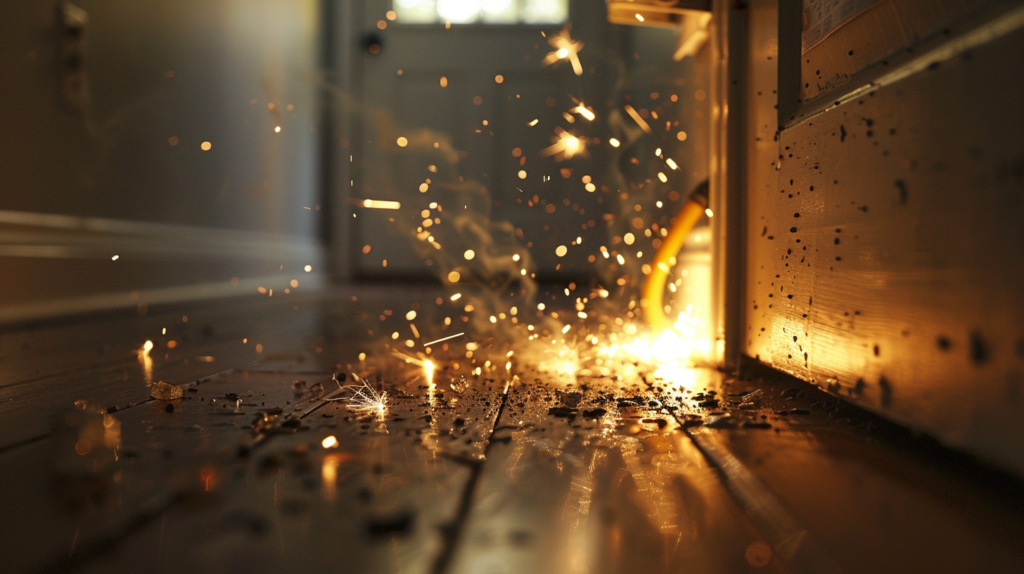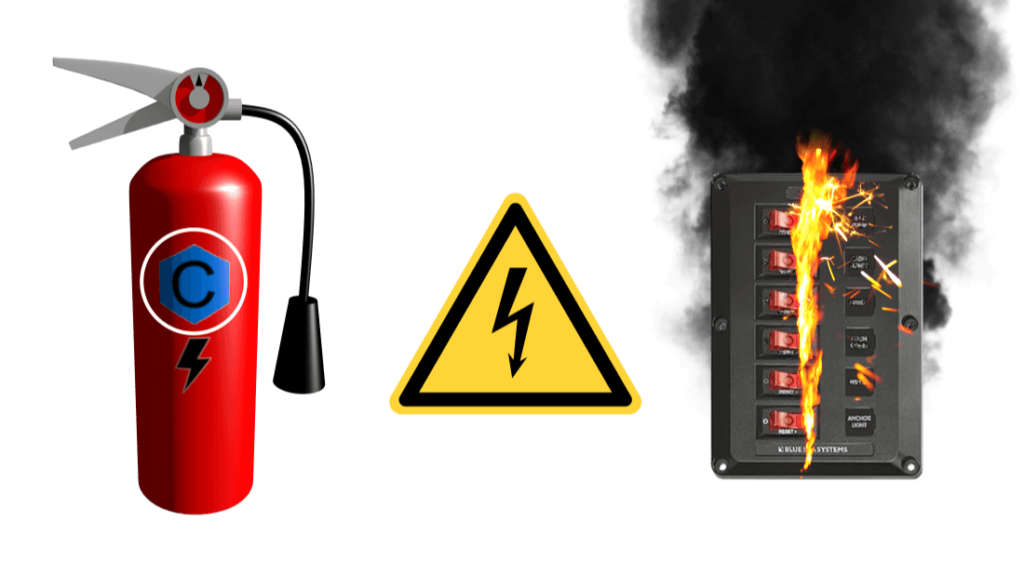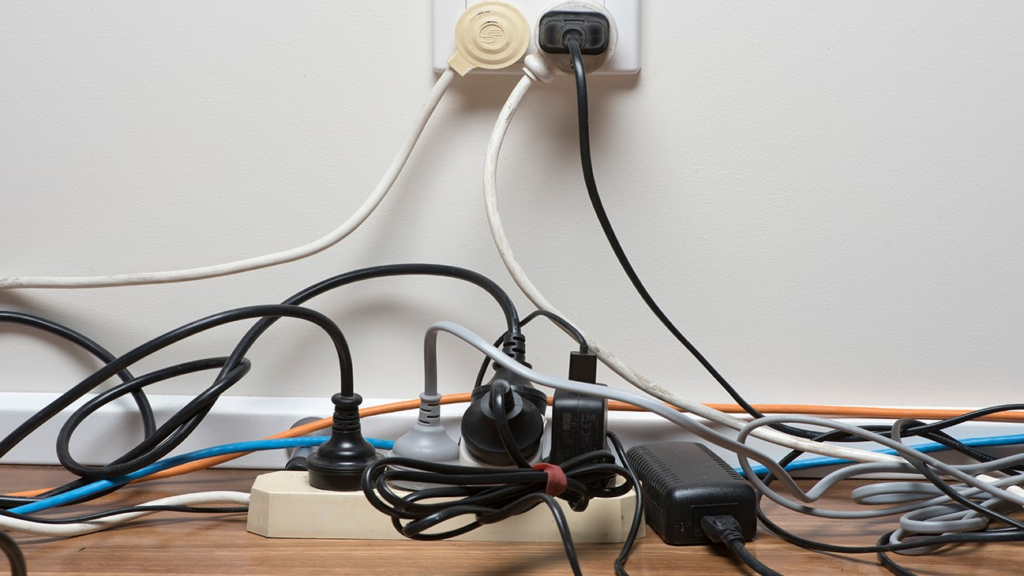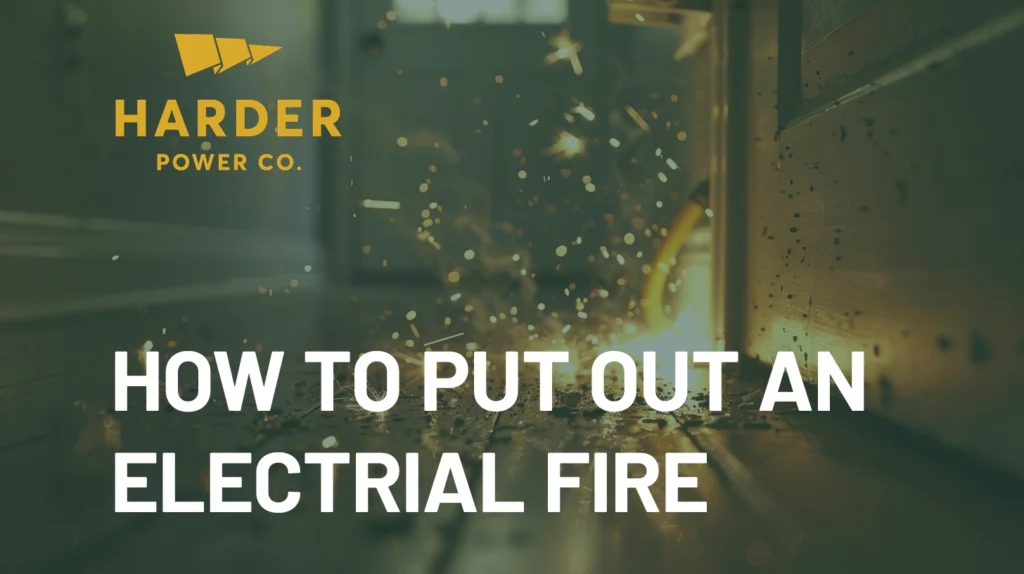Putting out an Electrical Fire
Imagine the horror of a spark suddenly bursting into flames, an electrical fire gripping your home! Understanding these fires, sparked by complex currents invisible to the naked eye, is crucial to ensuring the safety of your loved ones and property. The dangers are real and the aftermath is often devastating, necessitating knowledge and preparedness to combat this silent threat.
Knowledge is power, especially when it comes to fire safety; and at Harder Power, we know that understanding what causes electrical fires is the first step in safeguarding your home. Equipped with the right tools and a solid fire safety plan, you can mitigate risks and improve your response time during an emergency. This guidance could mean the difference between a close call and a life-altering event.
Understanding Electrical Fires
Electrical fires represent a unique danger in Abbotsford homes and businesses, primarily due to their potential to originate from a range of everyday sources. They are typically triggered by faults in electrical wiring, circuit breakers, or within the components of electrical appliances. These sorts of fires can be difficult to extinguish, as they require specific methods to ensure they don’t spread or resume after being suppressed.

What Causes Electrical Fires?
Various factors can lead to electrical fires, but some of the most common include:
- Aged and Faulty Wiring: Over time, electrical wiring can deteriorate. Frayed or damaged wires can spark and ignite nearby flammable materials.
- Overloaded Outlets: Outlets burdened with too many devices can overheat, leading to an electrical fire.
- Faulty Appliances: Sometimes, the appliances themselves can be defective, featuring faulty wiring or malfunctioning components that can cause a fire.
- Improper Use of Electrical Devices: Using devices in ways they aren’t designed for, like daisy-chaining power strips, can also create a fire risk.
- Combustible Materials Close to Heat Sources: Electrical fires can start when flammable objects are left too close to heat-generating electrical appliances like space heaters.
An adherence to electrical safety inspections can prevent many of these underlying causes from ever resulting in an actual fire.
The Dangers of Electrical Fires
Electrical fires pose a unique threat because they can occur without warning and spread rapidly. Their severity can range from minor damage to complete loss of property, and in the worst cases, can result in injury or loss of life. Key dangers include:
- Rapid Escalation: Once sparked, an electrical fire can quickly move through walls and into ceilings as it follows the electrical wiring throughout the structure.
- Toxic Fumes: Burning electrical materials often releases harmful toxins, which can be hazardous to breathe.
- Injury and Death: The potential for electrical shocks alongside fire-related injuries adds to the danger of these fires.
- Property Loss: Due to the rapid spread of electrical fires, they can inflict severe damage to property and belongings.
Knowing how to adequately respond to an electrical fire, including the appropriate use of fire extinguishers and the necessity of cutting power to affected areas, is essential for minimizing these dangers and preventing the fire from escalating.
Preparing for an Electrical Fire
To effectively prepare for the possibility of an electrical fire, it’s crucial to understand their common causes, which include poor maintenance of wiring, the use of outdated equipment, and non-compliance with safety codes. Being proactive in prevention can significantly reduce the risk of an electrical fire in your home or business.
Fire Safety Measures
Implementing specific fire safety measures is key in preparing for an electrical fire. The first step is ensuring that smoke detectors and carbon monoxide detectors are installed in your home. These devices provide an early warning that can save lives. Make sure they are in working order by testing them monthly and replacing batteries as necessary.
Creating a clear and practiced fire evacuation plan for your home is also essential. All family members should be aware of this plan and participate in regular drills to ensure everyone knows what to do in the event of an emergency. Additionally, keeping a properly rated fire extinguisher accessible in common areas, especially the kitchen, and knowing how to use it, can be critical in the first response to a fire.
Educating everyone in your household about the dangers of electrical fires and the importance of fire safety protocols can empower them to act quickly and efficiently if an electrical fire occurs.
Having the Right Tools
Equip your home with the right tools to combat an electrical fire. A fire extinguisher labeled for Class C fires (which indicates suitability for electrical fires) is indispensable. These extinguishers use dry chemicals to smother fires involving electrical equipment and should be easily accessible in your home.

For small electrical fires, having a supply of baking soda (sodium bicarbonate) on hand can provide an immediate response. Baking soda can be thrown directly onto a small electrical fire to help extinguish it, preventing escalation. Additionally, owning a fire blanket or keeping heavy, non-flammable fabric nearby can also smother small fires effectively.
Should an electrical fire grow beyond a manageable size, evacuate the area promptly, alert others in the vicinity, and reach out to emergency services immediately. After successfully extinguishing an electrical fire, it’s wise to engage a professional electrician to conduct a thorough inspection of your electrical system to address any issues and avoid future fires.
Creating a Fire Safety Plan
Developing a robust fire safety plan begins with the installation of smoke detectors in every room, including hallways and sleeping areas. This setup significantly increases the chances of early detection and prompt evacuation. Testing smoke detectors monthly is a good practice to ensure they are always ready to function in an emergency.
Establishing a comprehensive evacuation plan is next. This includes identifying all possible exits and ensuring that they’re always accessible. Conducting regular family practice sessions will cement this plan in everyone’s mind. Consider creating a fire safety drill calendar to maintain routine checks and drills.
Steps to Put Out an Electrical Fire
When an electrical fire ignites, your immediate priority is to ensure the safety of yourself and others. If the fire is large or you cannot confidently address it, evacuate the area quickly using a pre-planned escape route. Educate your family on this escape plan so that in the event of an emergency, everyone knows exactly what to do. Remember, it’s essential to act swiftly and calmly; getting to a safe distance should be your first concern. After the fire has been put out, contact a specialized service to inspect your electrical system for damages. They can make the necessary repairs or replacements to ensure it is safe to use again. Take no risks; if you’re unsure about handling the fire, skip to Step 5 and call emergency services.
Step 2: Cut Off the Power Source
To stop an electrical fire from spreading and increase your chances of extinguishing it safely, cut off the power source immediately. If accessible, reach for your home’s circuit breakers and switch off the relevant circuit or the main breaker. If it’s a particular appliance that’s on fire and it is safe to do so, unplug it. Do not try to reach for or open a circuit box that shows signs of burning—this could put you at risk for electrical shocks or further aggravate the fire. Once the power supply to the area of fire is disabled, you may proceed to use a Class C fire extinguisher if you have one on hand.
Step 3: Use a Fire Extinguisher
If you have a Class C fire extinguisher, it is the best tool to combat an electrical fire. These extinguishers contain dry chemicals that can effectively smother the fire without conducting electricity, like sodium bicarbonate or monoammonium phosphate. Before an emergency arises, familiarize yourself with the PASS technique: Pull the pin, Aim the nozzle at the base of the fire, Squeeze the handle, and Sweep the nozzle from side to side over the fire. Use this method to cover the area of the fire until it is completely extinguished. If you’re not trained on how to use it, it’s better to evacuate and call for professional help.
Step 4: Smother the Fire with Baking Soda or a Heavy Blanket
For smaller electrical fires, if you don’t have access to a Class C fire extinguisher, baking soda can be your lifesaver. Liberally throw handfuls of baking soda onto the source of the flames. The sodium bicarbonate will help smother the fire. Alternatively, if it’s safe to approach, you can use a heavy, non-flammable blanket, or fire blanket to do the same by cutting off the oxygen source to the fire. Both methods are practical ways to put out small flames quickly. However, do not use water on an electrical fire, as water is a conductor of electricity and can lead to electrical shocks or worsen the fire.
Step 5: Call for Emergency Services
No matter the size of the fire, it’s crucial to call for emergency services right away. In some cases, the fire might seem small and manageable but always err on the side of caution. Fires involving electrical wiring can be deceptive and spread within walls or other hidden areas. Provide the dispatcher with detailed information, including the fact that it is an electrical fire, and follow any instructions given by the emergency operator. If you can’t cut off the power, inform the fire department, as this information is crucial for firefighter safety. Remember, your property can be recovered or replaced; your life cannot, so prioritize safety over fighting the fire.
To ensure your content is well-formatted for ease of reading, consider including a table or list outlining the five steps concisely. Additionally, utilize short, clear paragraphs to relay critical information efficiently.
Preventing Electrical Fires
Preventing electrical fires requires both proactive measures and a keen awareness of the devices we use daily. Here are the steps one should take to minimize the risk of such incidents:
Regular Electrical Safety Inspections
To prevent electrical fires, it is important to schedule regular electrical safety inspections. A professional electrician can identify and repair any potential hazards, such as outdated wiring, overloaded circuits, or faulty appliances. During these evaluations, electricians ensure all systems comply with current safety standards. Furthermore, they can inform homeowners about any necessary upgrades or repairs, which, once addressed, could potentially save lives and property.
Avoiding Overloaded Outlets
Outlets can be hotspots for electrical fire risks if overloaded. Using multiple-outlet adapters or plugging too many devices into a single outlet can lead to overheating and fire. Instead, contact a licensed electrician to install additional outlets. Modern homes often include electrical circuit interrupters, which guard against electrical fires and shocks—another reason to consider upgrading your electrical system.

Proper Electrical Wiring and Connections
Adequate electrical wiring and secure connections form the backbone of electrical fire prevention. Regular checks should be carried out to ensure that circuit protection is appropriate and functional, and that all connections are free from dust and damage. Secure and correct plug tops can also prevent fires in domestic settings. Reduce the risk of electrical fires by limiting the use of extension leads and ensuring that electrical work is performed by competent professionals.
Safe Use of Electrical Devices and Appliances
Using electrical devices and appliances safely is paramount in preventing electrical fires. Frayed or worn appliance cords should be replaced immediately to reduce the risk of ignition. Always match the wattage of your light bulbs with the maximum wattage specified by the light fixture to avoid overheating. Avoid using damaged cords, running extension cords under carpets, or placing cords where they can be damaged.
Educating Family Members on Fire Safety
Educating family members on the hazards of mishandling electrical devices, and maintaining a fire-resilient environment is essential. Ensure that everyone knows to unplug appliances not in use, and teach them the importance of reporting potential hazards. Smoke detectors should be installed and regularly tested in every room, with an evacuation plan in place and practiced regularly.
Each passage here aligns with the guidelines and facts provided, honing in on how to maintain a safe environment that can significantly reduce the likelihood of electrical
About Harder Power Company
For residents of the Fraser Valley, Harder Power Company is more than just a service provider. It’s a friendly neighbor you might spot around town in their distinctive green vans. They’re always ready for a chat or to discuss how they can meet your electrical needs, emphasizing a strong community connection.
Reach Harder Power at (604) 832-9215 or send a message to their contact us page today.


